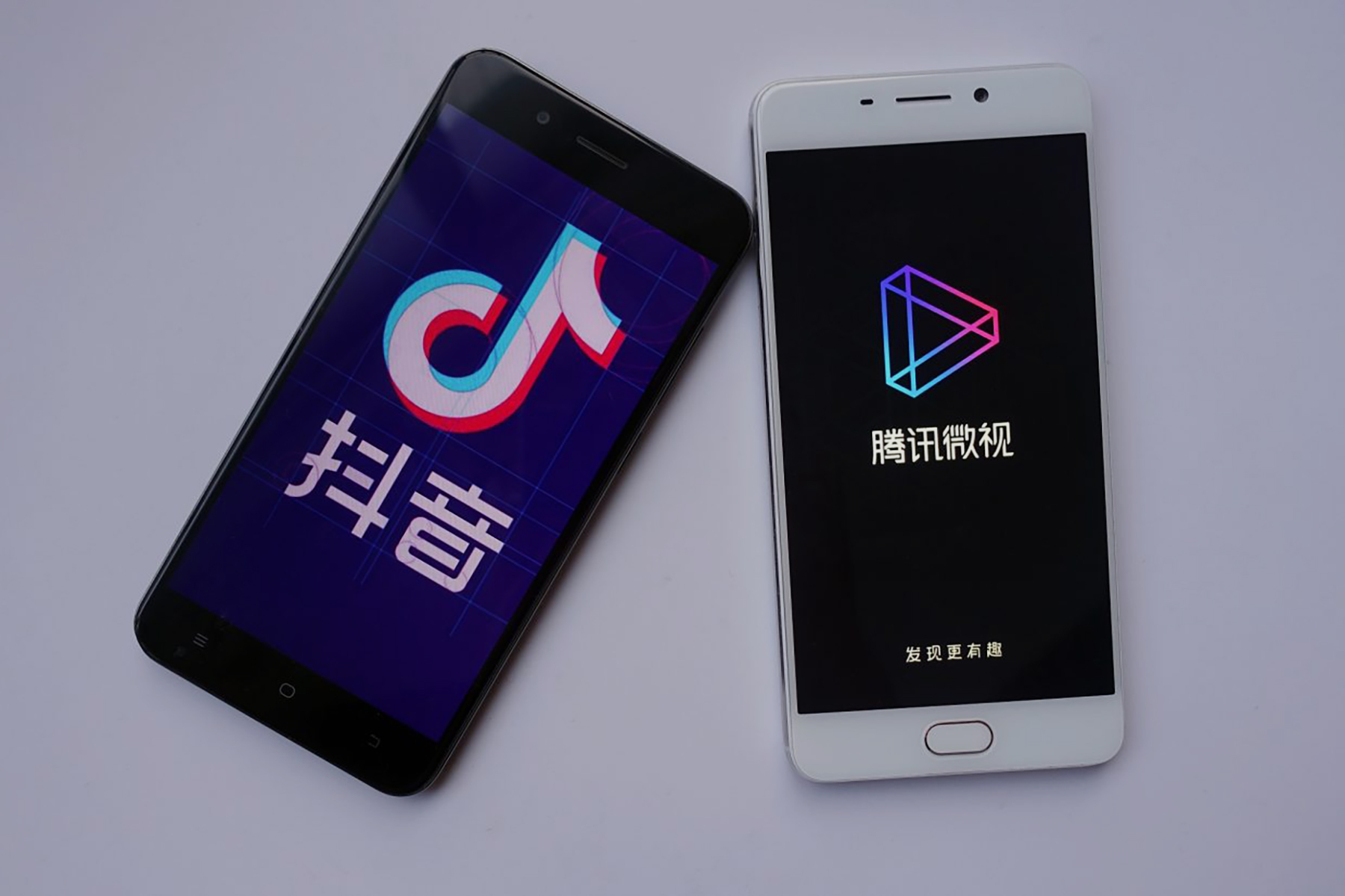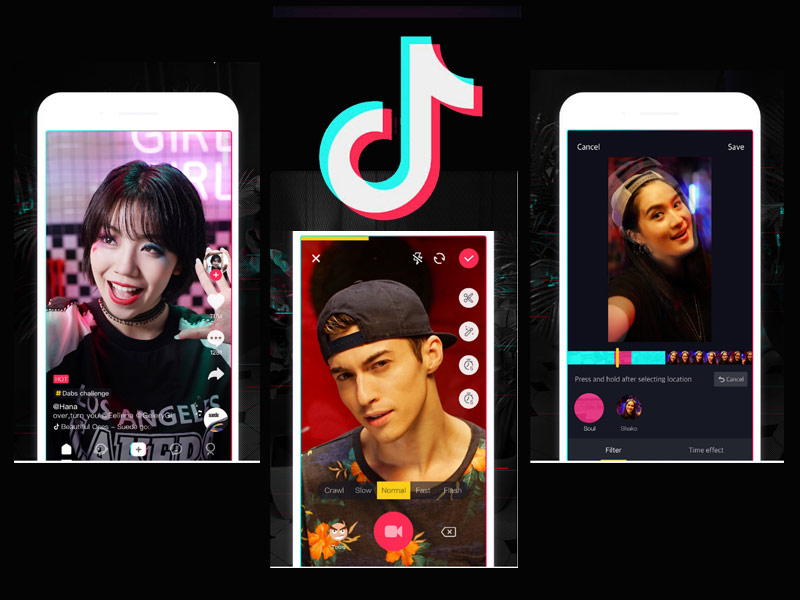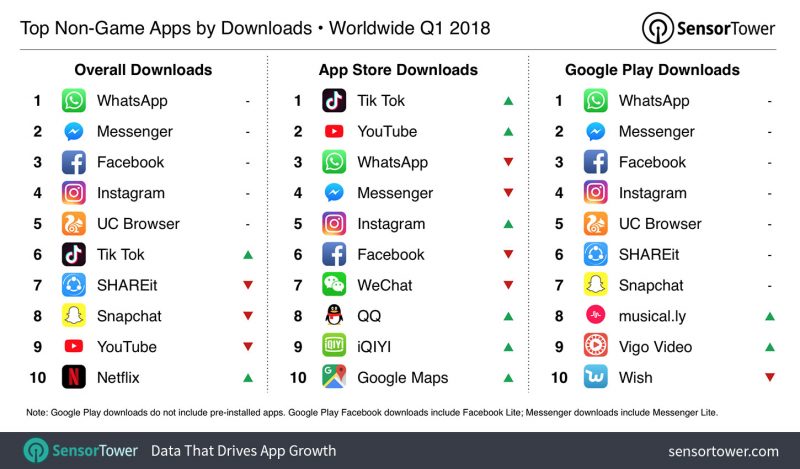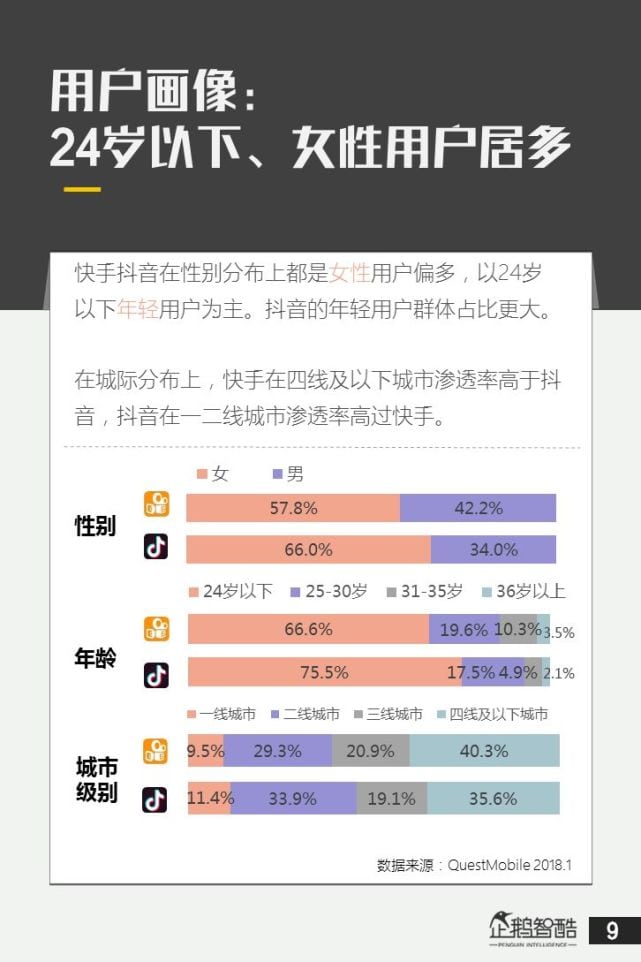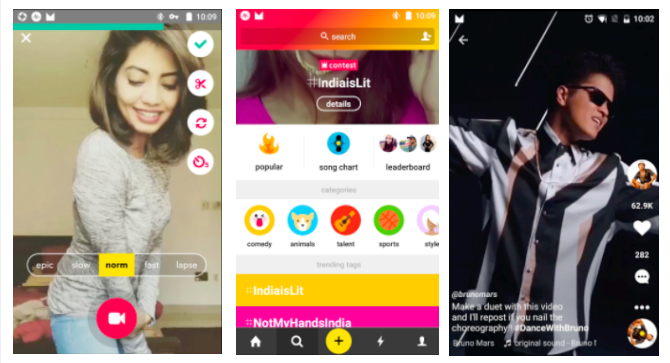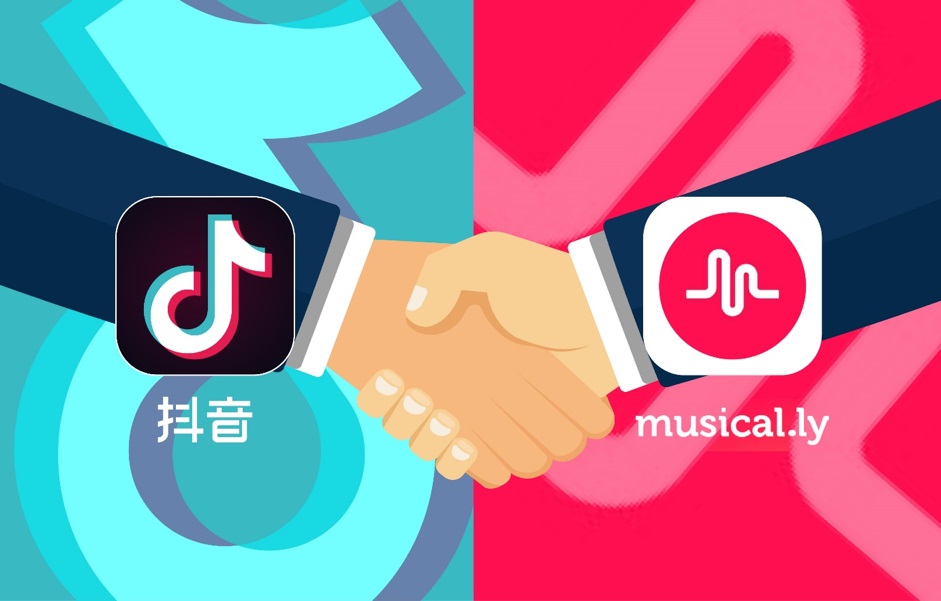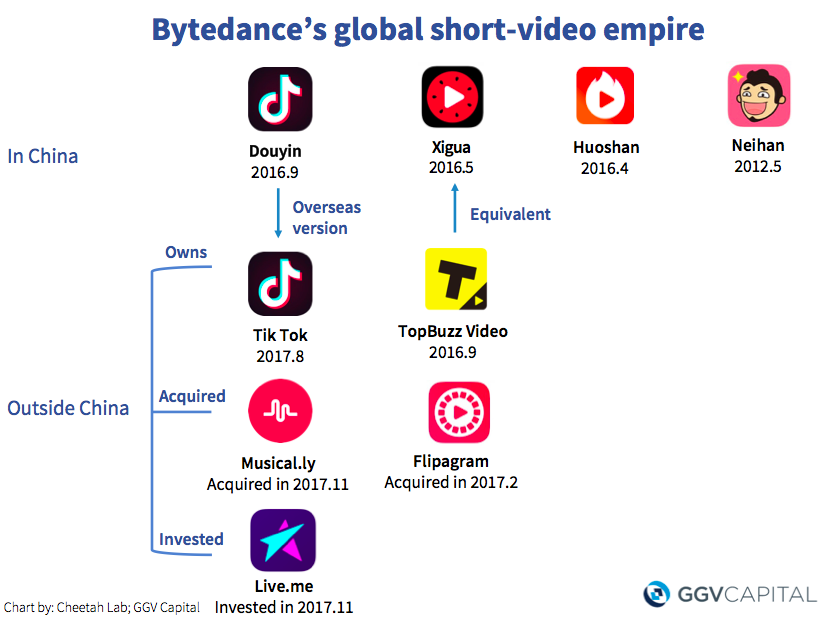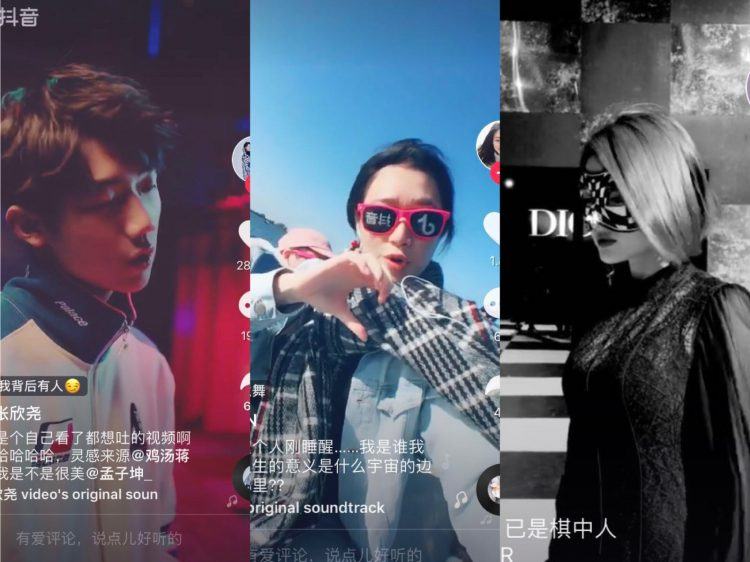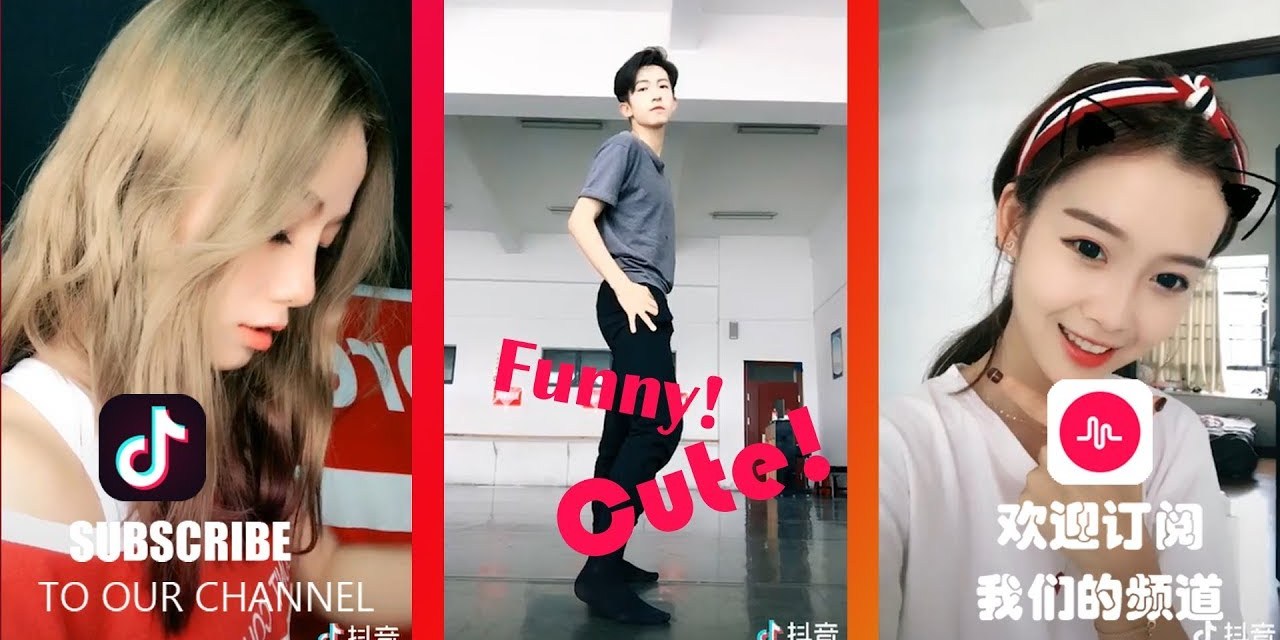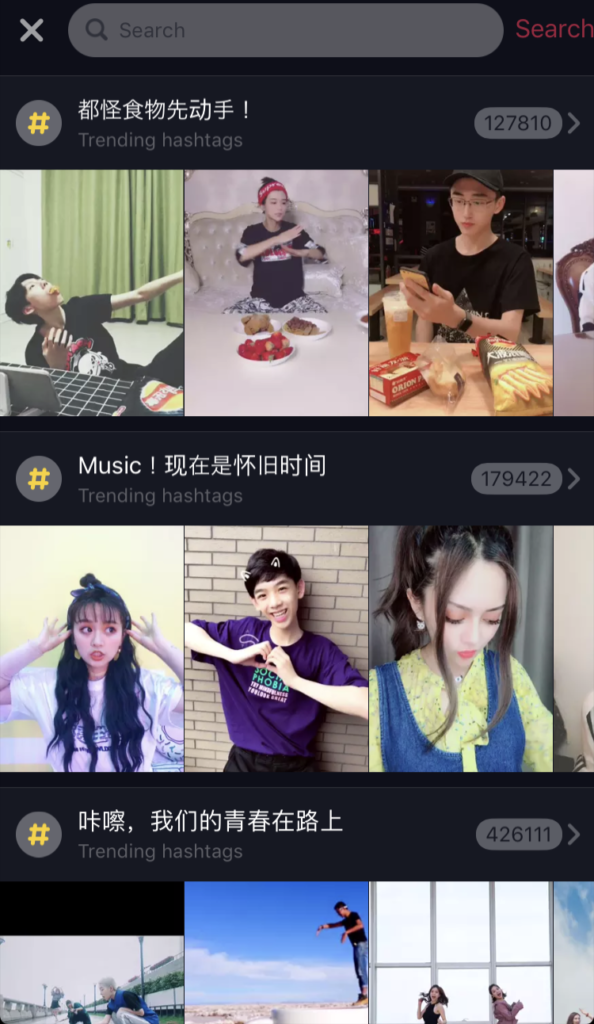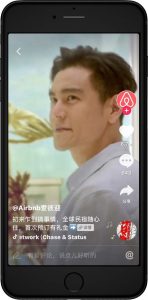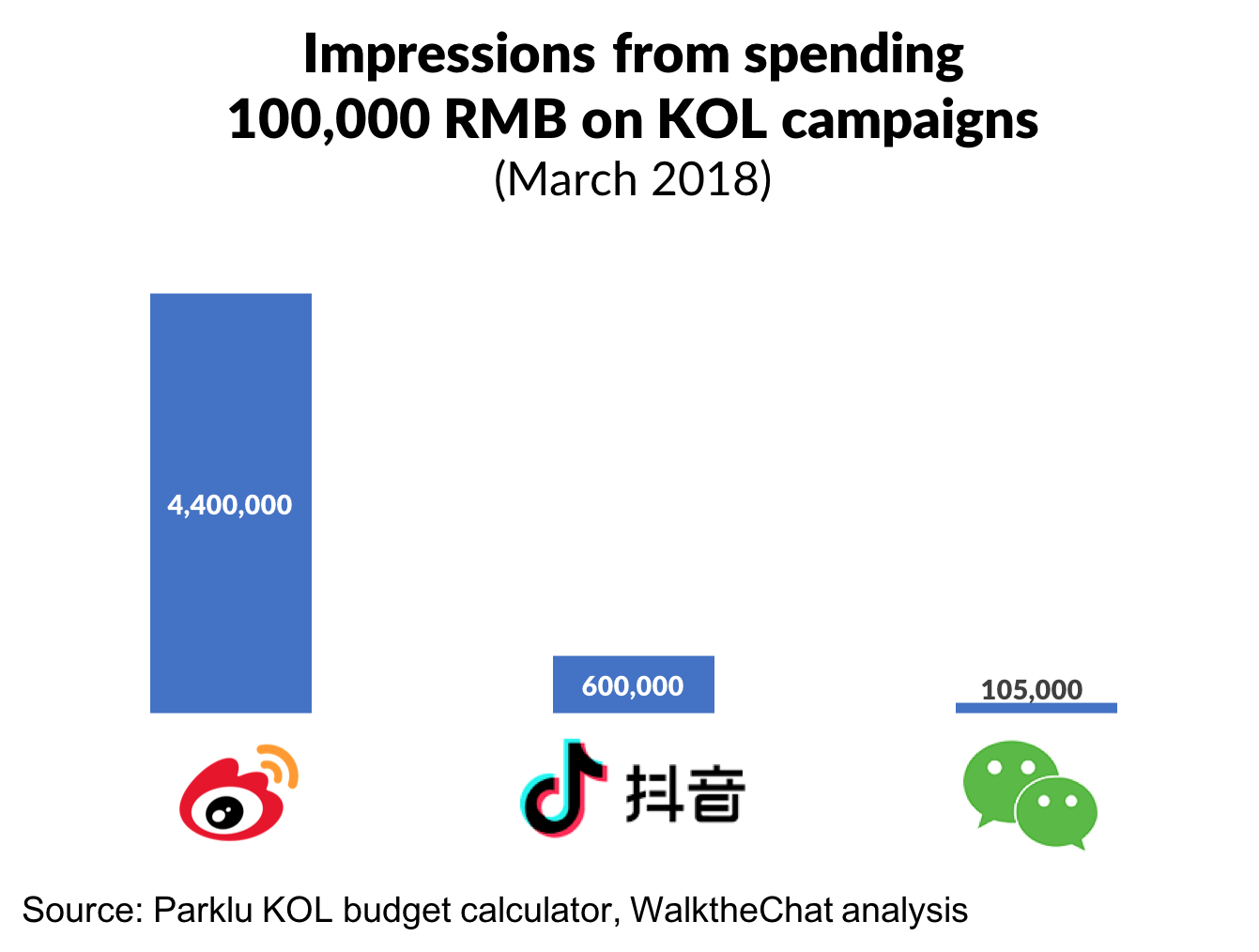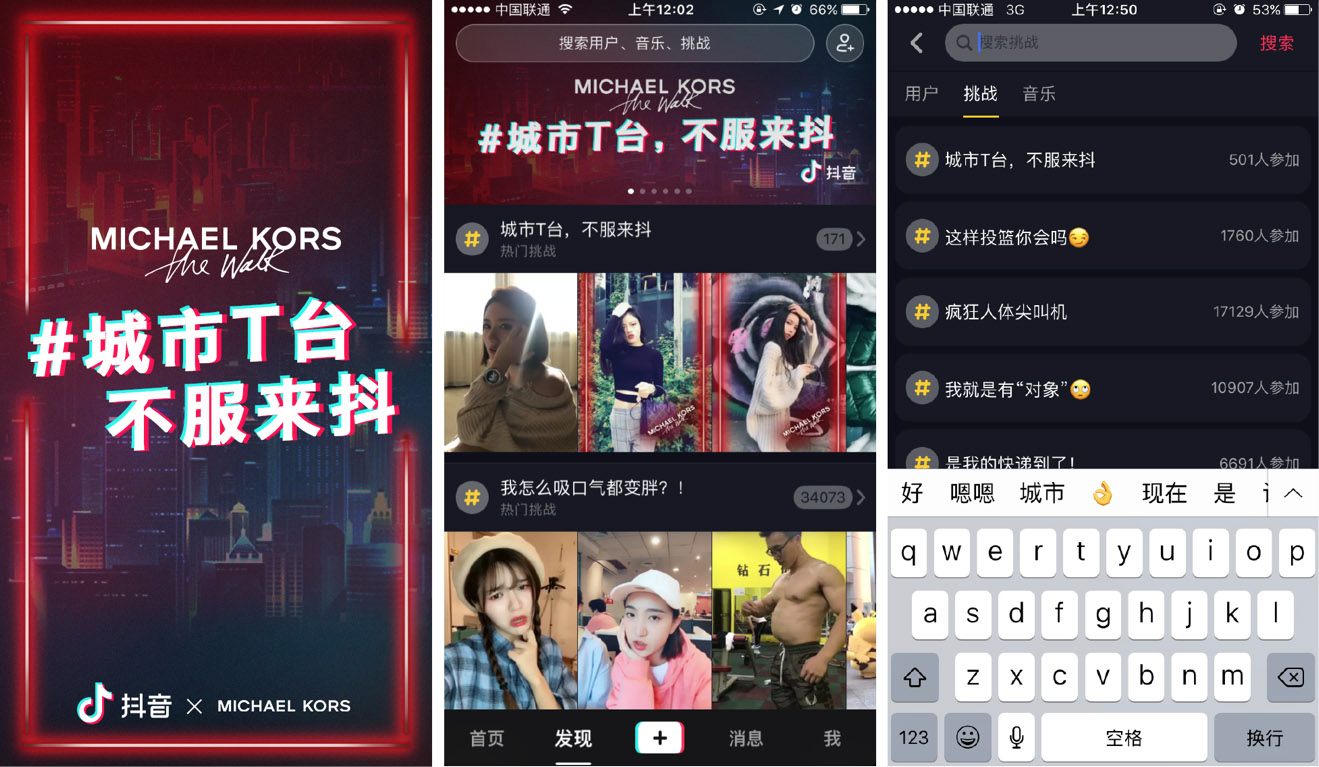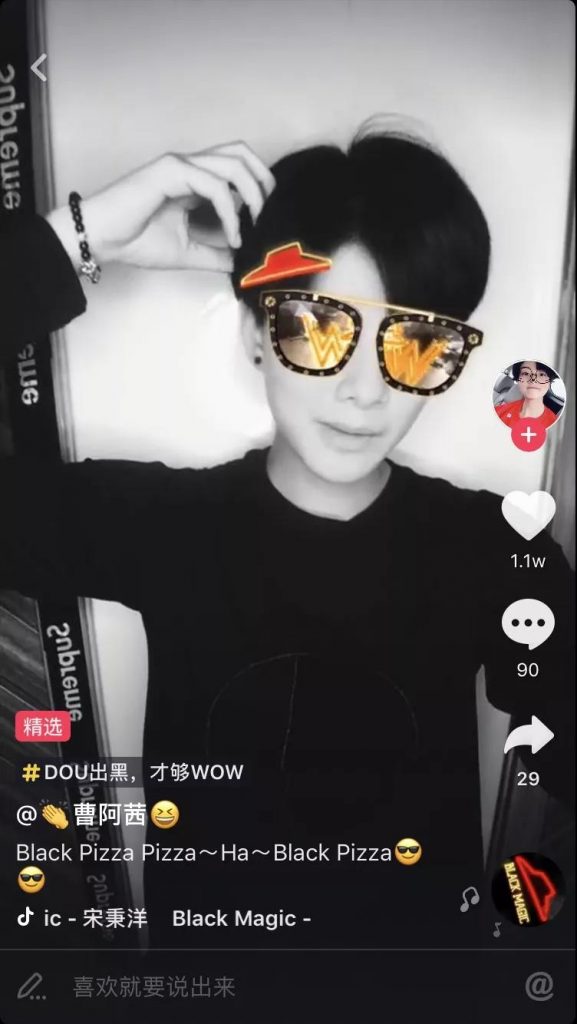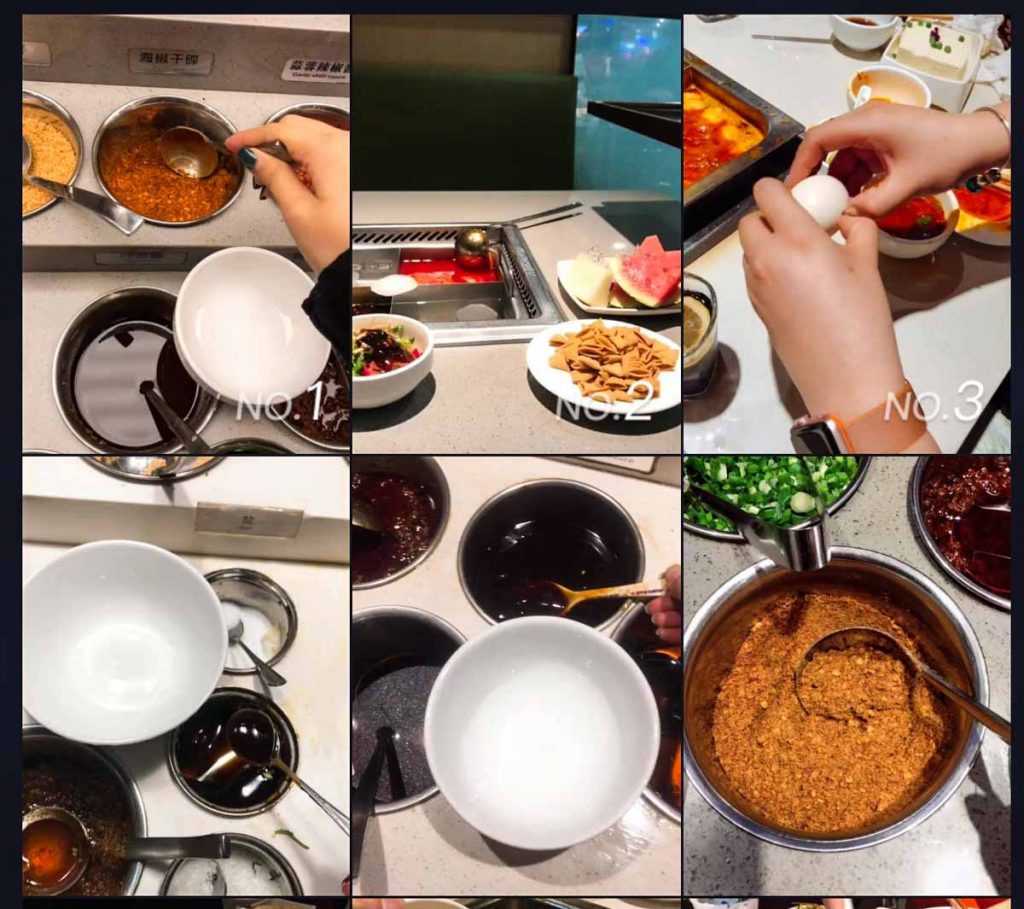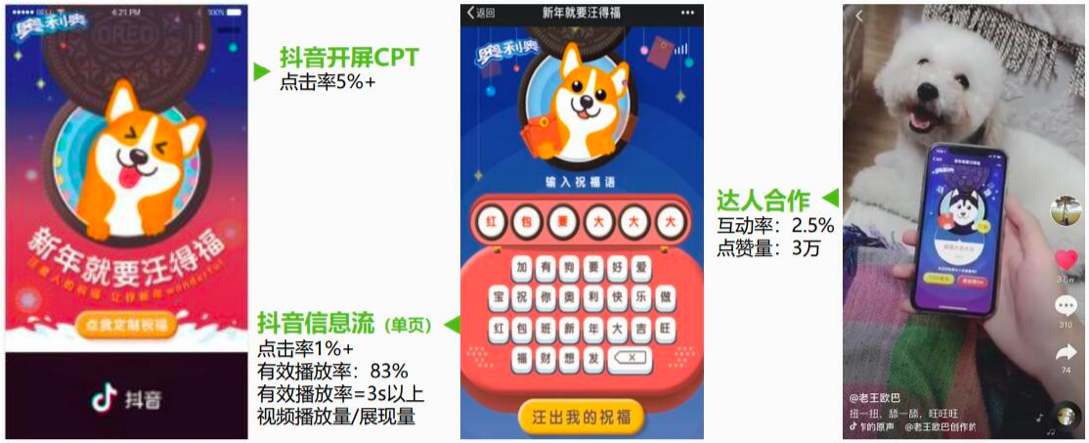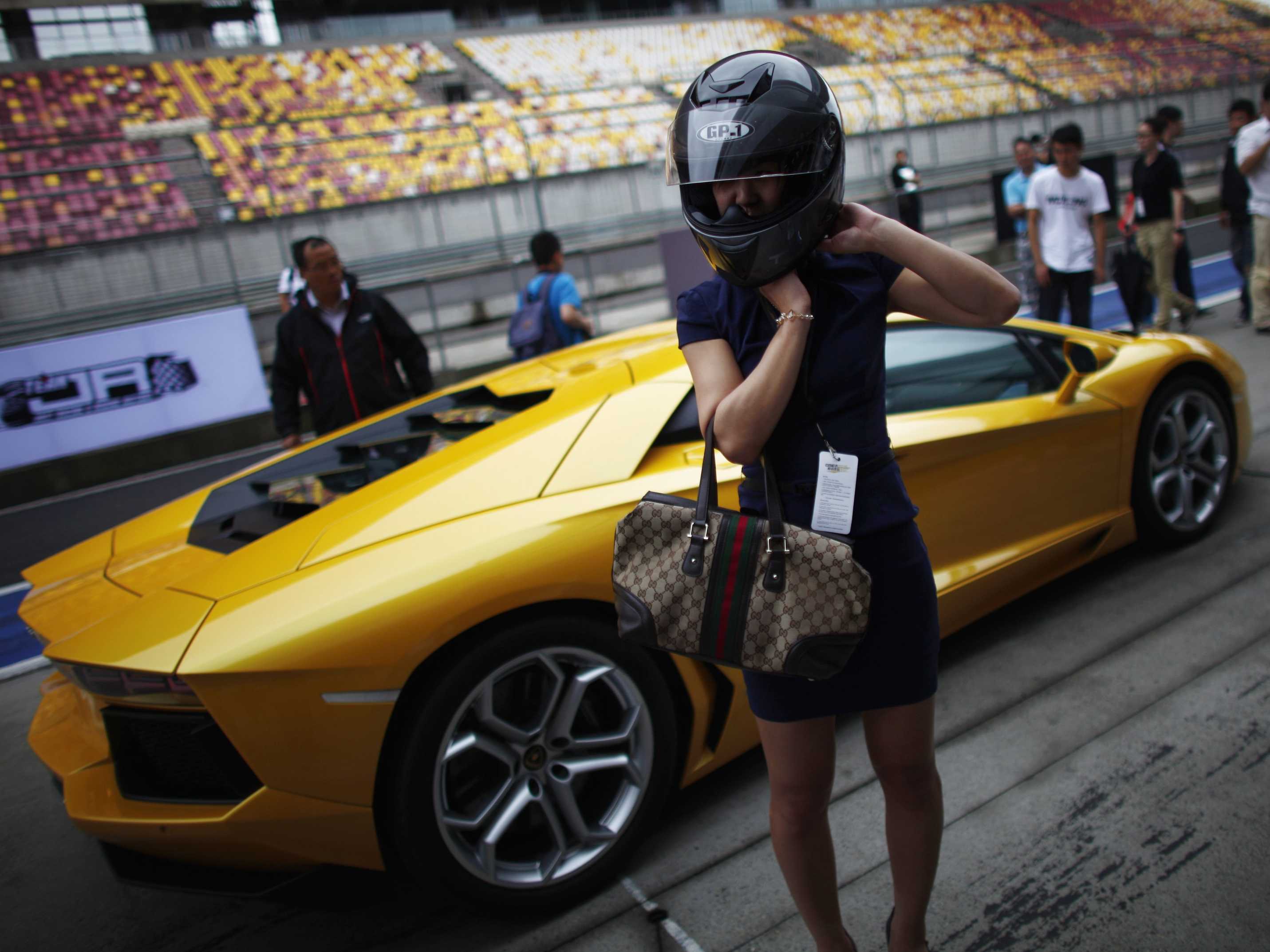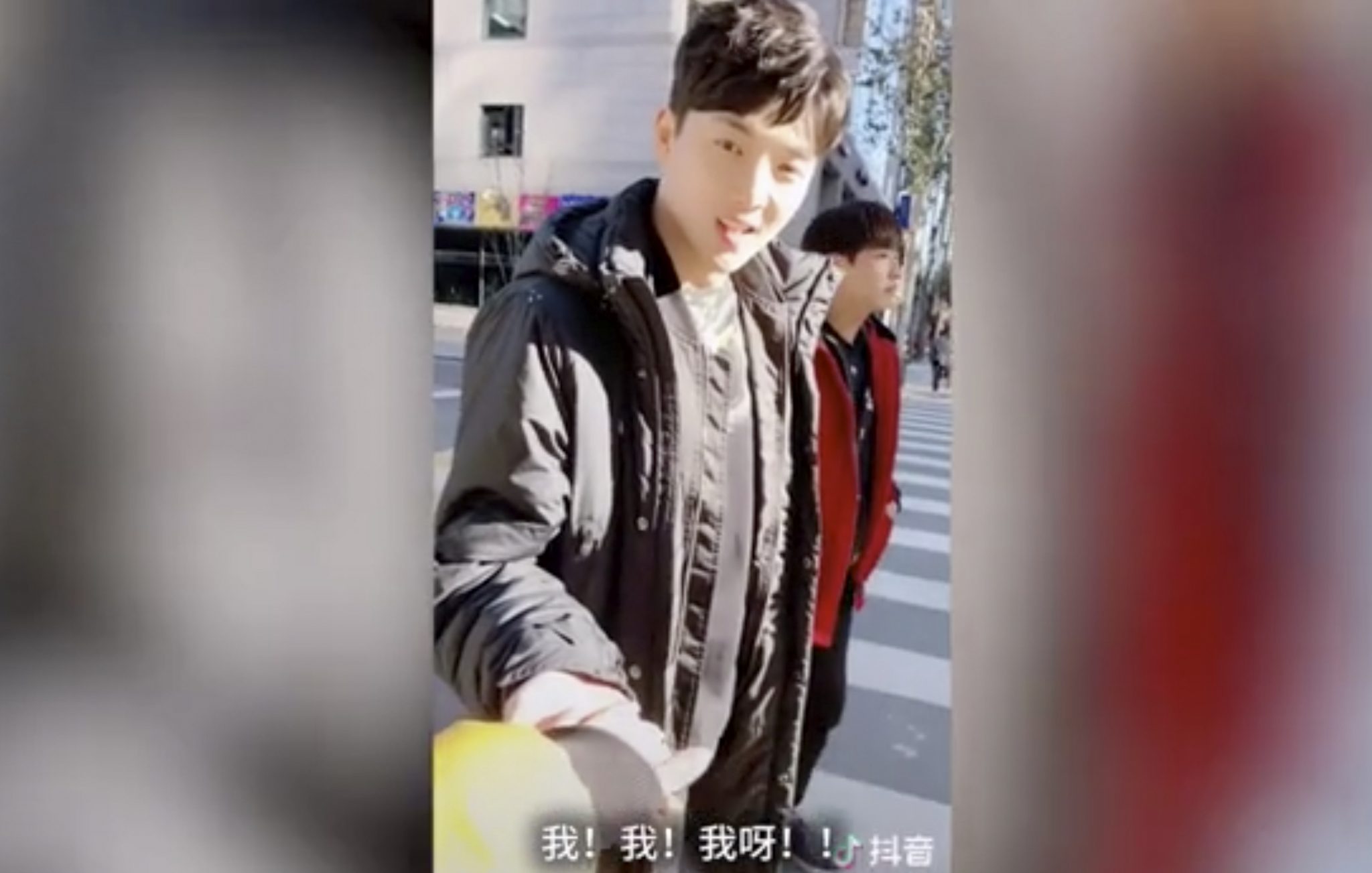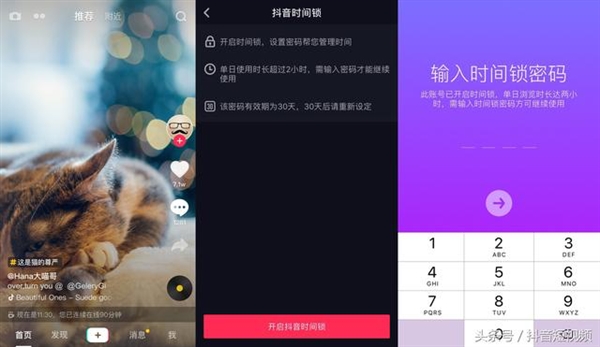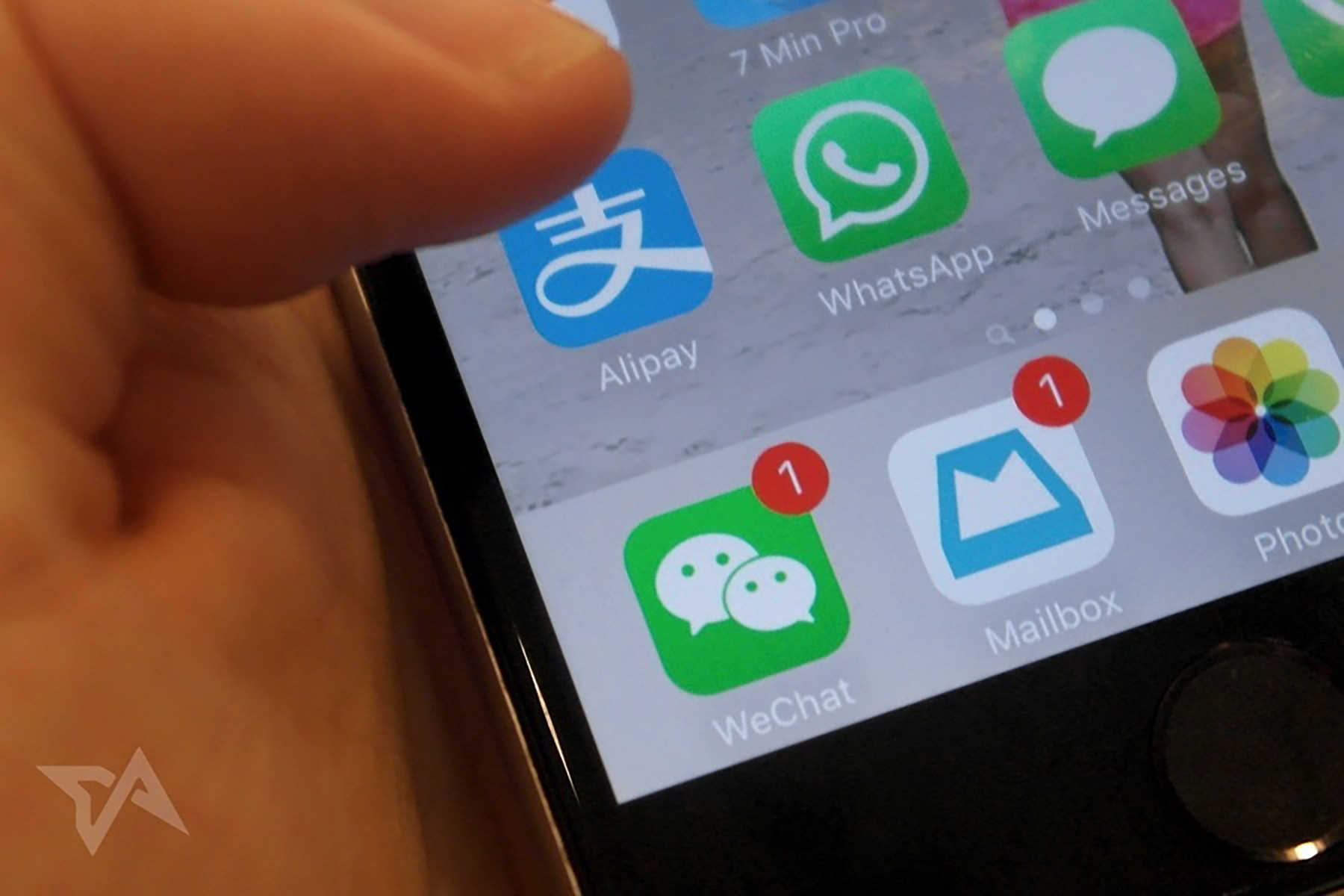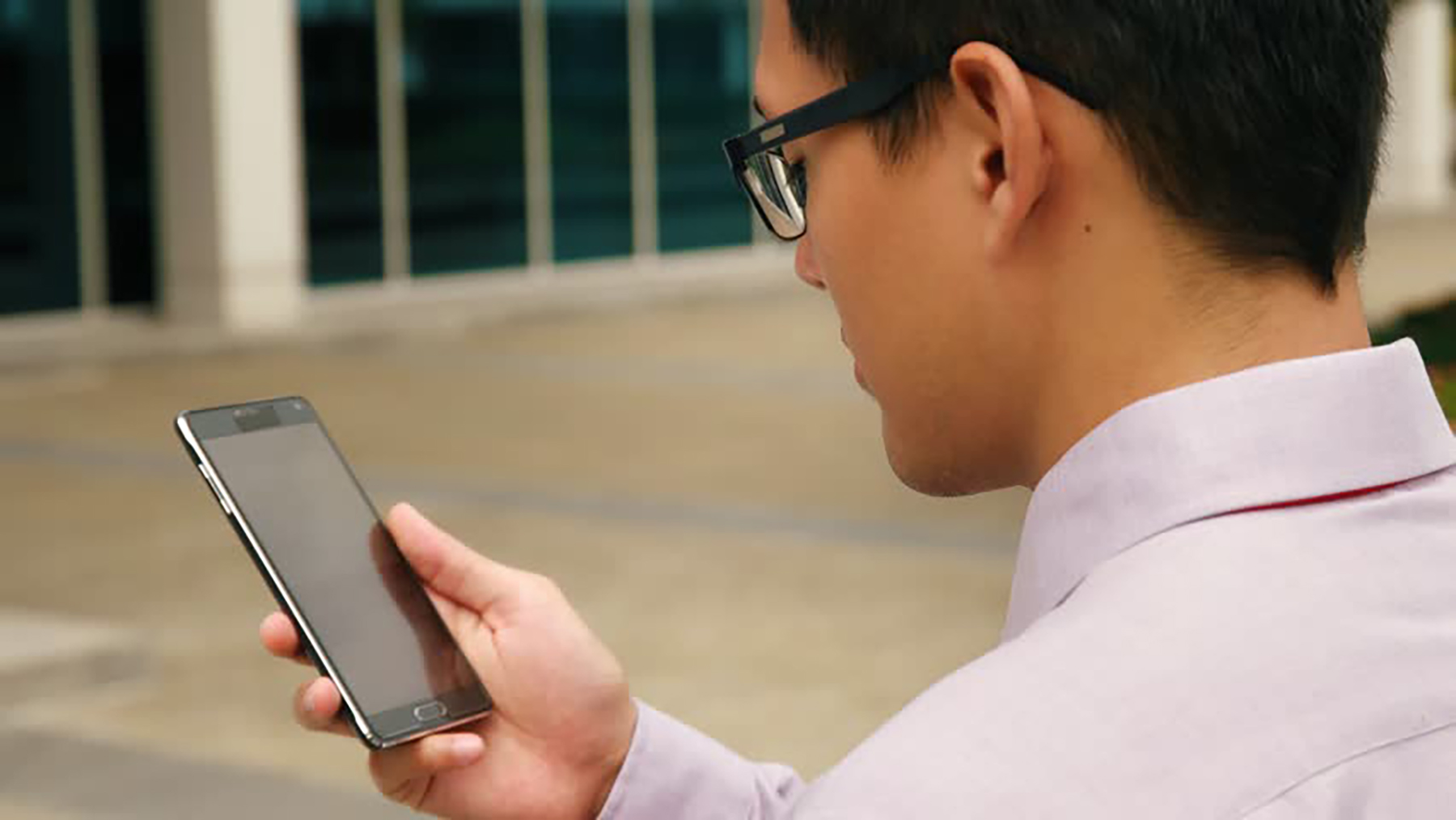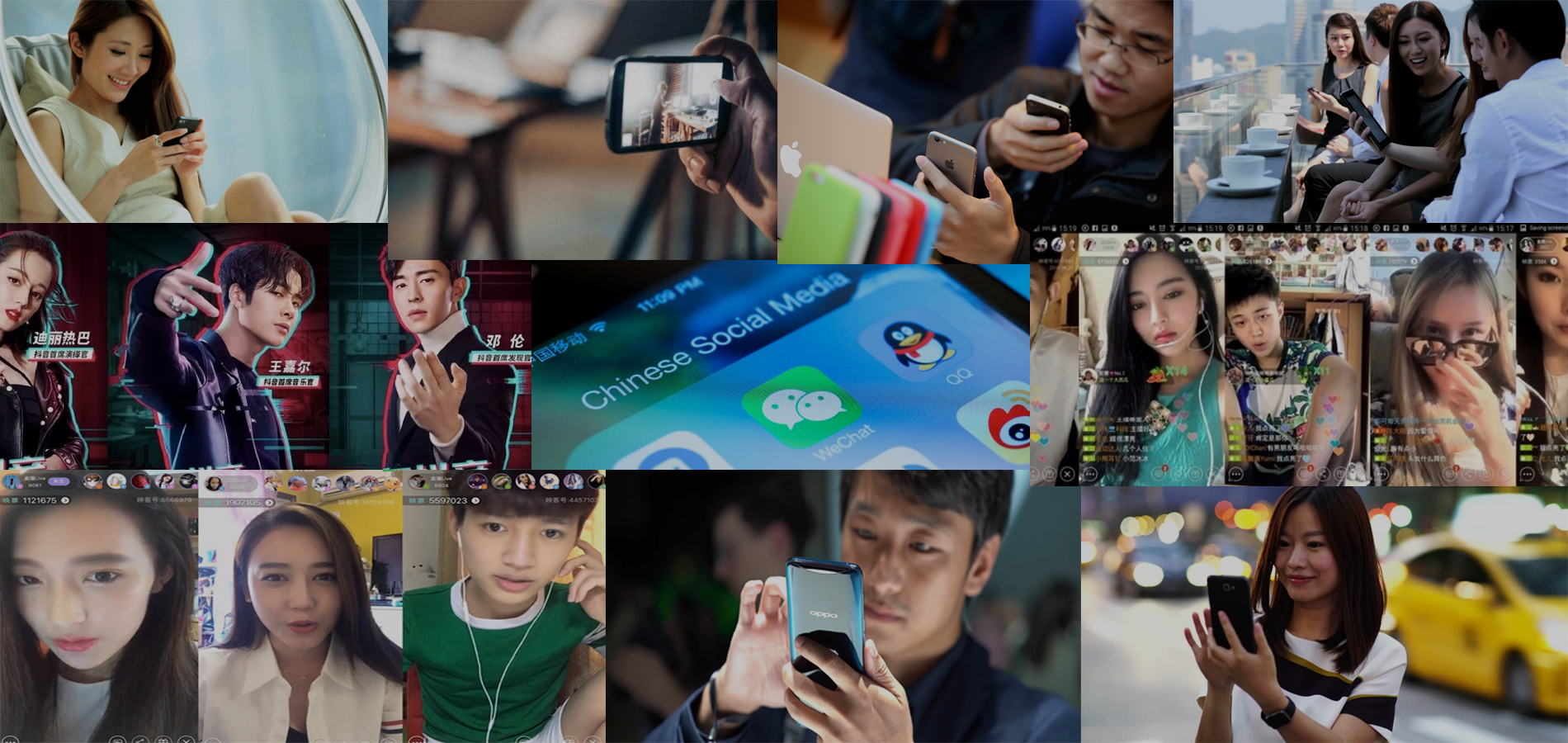- Introduction Into Douyin
- What Makes Douyin Ideal For Brands
- How Have Brands Used Douyin
- Douyin’s Shortcomings
- Final Thoughts
Introduction Into Douyin
1. What is Douyin?
2. How does Douyin work?
3. Popularity and usage of Douyin
4. Demographics of Douyin
5. Why Brands Should Be Excited About Douyin
1. What is Douyin?
Douyin is one of the most popular social media apps in China, and is built around short videos. Douyin allows users to post and send photos, livestream videos, and lip sync along to music.
Douyin, is owned by ByteDance and was launched in September 2016. Despite having a relatively glacial growth until mid-2017, it has since then skyrocketed in popularity, both domestically and abroad. Tik Tok, the international version of Douyin, topped the Apple App Store’s global non-game download chart for the entire first quarter of 2018, besting the likes of Facebook and Youtube.
Being more practical for Chinese brands than Snapchat ever was in the West, and having growth figures that put brands like Instagram’s to shame, is Douyin the next biggest digital marketing opportunity for brands?
2. How does Douyin work?
Douyin’s main use is to upload short videos (no longer than 15 seconds) for people to watch. Coupled with robust editing capabilities and quick consumption anywhere anytime, Douyin has become extremely addictive to the young Chinese crowd. Genres of clips can vary, and just about anything can become a viral sensation on the platform.
Some of the most popular genres of videos are entertainment focused, like pranks, stunts, comedy skits and of course dancing and lip-syncing to music, all of which can appeal to anybody.
There are also the informative types of videos that trade a larger audience appeal for a more targeted following. The most common of these include life hacks, on-the-go makeup tutorials and food tips.
Once users open the app, they are met with an endless feed of 15-second videos, which they can scroll through at their leisure. There is no ‘play’ or ‘pause’ button, meaning videos will begin playing the moment users scroll past, maximising the ease of use. Since the content is so bite-sized it encourages people to consume it everywhere (on the commute, on the street, at work, in bed).
3. Popularity and usage of Douyin
Douyin has had a meteoric rise of users due to the ease of content consumption on it. Furthermore, the variety and quality of videos being uploaded every day is staggering, getting users to come back day after day.
- A Jiguang Data report earlier this year showed that users are spending 20.5 minutes per day (avg.) on Douyin. Considering videos are 15 seconds each, that’s 82 videos per day for EACH user.
- Douyin is getting 150 million users per day, and as of June, boasts a very impressive 300 million monthly active users (MAU).
- The click rates of videos on Douyin averaged 100 million times each day in May 2017. In August, the number jumped to 1 billion. This figure has likely increased tenfold since then.
Douyin’s use is not limited to normal individuals and brands however. Over 500 government organizations and media, including People.cn, CCTV, and SASAC, have set up their accounts on Douyin and videos regarding government affairs have garnered over 1.6 billion views in total.
4. Demographics of Douyin
Douyin understood that it’s early adopters could determine the trajectory of their success and userbase. In the early days, Douyin’s team recruited attractive young artists from top music & art schools across China to make high-quality content on the platform.
This helped Douyin gain traction and use, and has allowed Douyin to build up a core user base that is highly ideal for luxury brands.
- Over 60% of users have college degrees.
- 66.4% of Douyin’s userbase is female.
- A whopping 80% of users on the platform are under the age of 30.
- Over 40% of Douyin’s user base live in first and second tier cities.
Douyin will approach future business growth similar to WeChat, by increasing their presence overseas. Zhang Yiming, founder and CEO of Toutiao (Douyin’s sister company) says the key goal for 2018 will be globalisation. Zhang hopes that in the next three years, 50% of Douyin’s user base will be from overseas.
5. Why Brands Should Be Excited About Douyin?
Before we can properly understand why brands should be excited about Douyin, it is important to first learn about it’s predecessor Musical.ly (stylised as Music.ly), and the correlation between the two.
Douyin, a rip-off of Western platform Musical.ly?
One of the biggest misconceptions is that Douyin is a ‘Chinese ripoff of Western app Musical.ly’. Another misleading ‘fact’ (albeit less prevalent) is that the two are competing with one another.. At a glance, these imply Douyin is an inferior platform, and that more opportunities lie with Musical.ly. This is misinforming, and is turning brands away from what could be a fantastic avenue of targeted marketing, so let’s clear it up.
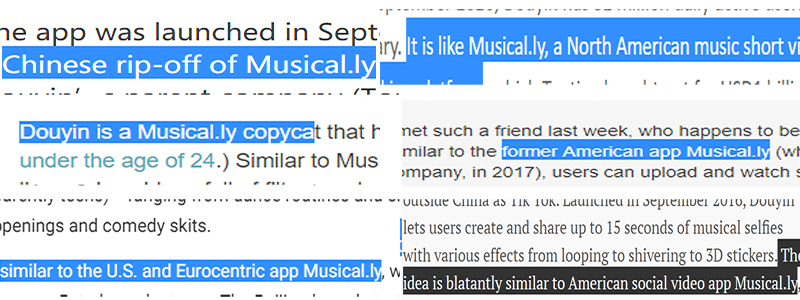
6 of countless ‘reputable’ sources spreading misleading information (will remain unnamed, out of professional courtesy)
First and foremost, Musical.ly is not actually a Western or US app. It is a Chinese social media short video app that was founded in 2014 by Alex Zhu and Luyu Yang.
It quickly gained popularity among teenagers, and was used quite often by mainstream celebrities in the west, like Shawn Mendes, Kim Kardashian, Selena Gomez, Ariana Grande, Steph Curry, Jason Derulo, Bruno Mars and more, hence the appeal to claim Musical.ly as an American platform.
Acquisition by ByteDance
Another thing to note: Douyin and Musical.ly are not competitors. A small fact overlooked by several sources is that Musical.ly was actually acquired by ByteDance. The original founders Alex and Luyu will continue to oversee Musical.ly as a separate platform, but will be cooperating closely Douyin to extend Musical.ly’s reach in China and around Asia.
“The merger should help Musical.ly grow in new markets such as Japan and South Korea as well as in China, where it has struggled to gain a foothold despite its popularity in other parts of the world.”, writes Rishi Iyengar from CNN Tech.
Surpassed by Douyin
While many sources are quick to claim Douyin is ripping off and trying to be Music.ly, there is one notable fact in particular that is amusingly left out and never used. Douyin’s statistics compared to Music.ly’s.
Douyin due to it’s immense popularity, has broken past 150 million daily active users within just two years of it’s inception, and it’s growth is not slowing: with GGVCapital’s recent statistic showing a continued upward growth. Keep in mind this only accounts for domestic users.
Musical.ly, on the other hand, which was launched two years earlier than Douyin, recorded 60 million users in Q1 of this year. Or more accurately, 60 million monthly active users globally. And also in spite of the fact since late 2017, it has had the assistance of Douyin in growing it’s user base in Asia.
Importance of having the Right Facts
In sheer users and growth trajectory, Douyin has long surpassed Musical.ly. Thankfuly, Douyin and Musical.ly are both working together, and not competing with one another.
With those misconceptions put to rest, it should be very apparent to why brands are getting excited about Douyin. Furthermore, when the right facts are present — Douyin taking inspiration from Musical.ly should only be another cause of excitement amongst brands. It provides actionable basis that this new short video app will have just as much potential as its predecessor to become a global phenomenon.
What Makes Douyin Ideal For Brands?
1. An Ideal Demographic
2. Douyin Is Fantastic For Viral Trends
3. Acceptance of Commercial Content
4. Huge Upcoming Platform Developments
1. An Ideal Demographic For Luxury Brands
Gender and Age
An overwhelming 80% of Douyin’s userbase are under 30, and 66% of them are female, both are key demographics for fashion brands. Furthermore, Douyin, like most social media apps, places more focus and promotion towards attractive content creators. With Douyin’s core format of short 15 second videos, a pretty face can sometimes be the whole appeal of a video.
“The videos are funny, and some are just beyond my imagination, so I’ve often found myself still watching it more than an hour after I opened the app,” said Hao Jingyi, a 19-year-old college student in Shanghai. “And another important thing is that I can see many pretty boys and girls there,” she said.
This means that target market aside, brands will also have an abundance of influencers to work together with for campaigns and promotions, that will be an easy source of outreach. After all, beauty sells.
Location and Affluence
Over 40% of Douyin’s users live in first and second tier cities indicating wealth and affluence. Furthermore, a large portion of the users are between the ages of 20 and 25, meaning many are just beginning their careers and have potential to become luxury buyers in the future even if they aren’t now. With 60% of these users having college degrees, the likelihood only increases.
Chinese cities are also growing, and so what might be a third-tier city, could very well become a second or even first tier by 2020.
Key Opinion Leaders
Douyin is also great for brands to build long-term relationships with the users, many of which may just be a part of the next wave of Chinese social media influencers.
Douyin works closely with agencies in China that specialise in propelling ordinary young adults to internet stardom. An example of this is Dai Gu La K (代古拉K) is a 22 year old college girl who records short videos of herself dancing.
In 30 days, she gained 10 million followers. There is tremendous untapped potential for KOLs in this aspect. If brands can build positive ground with the popular users, it may pay off tenfold down the line — especially when the popularity of these user’s extend beyond Douyin.
2. Douyin Is Fantastic For Viral Trends
Hashtag Challenges
Douyin often launches interesting hashtags that act as challenges. These challenges can typically have up to hundreds of thousands of people participating in making videos that follow the theme of the hashtag. Because of this, Douyin lends itself extremely well to viral content. An example of this is the ‘Seaweed Dance’ that went viral in China earlier this year (think of a national ‘Gangnam Style’).
Hashtag challenges can also be an effective marketing strategy, as demonstrated by Michael Kors using the challenge as a way to get users to engage and compete for the most popular video. Their ‘city catwalk’ hashtag had over 30,000 participants, along with their sales in China skyrocketing as users flocked to take part.
Free Promotion and Word-of-Mouth
Brands are also benefiting from Douyin’s avid users without cost. Creative users would upload videos of some DIY dishes they made at a restaurant, like stuffing a raw egg and shrimp paste into a tofu ball and then boiling them together. This went viral, with thousands recording their own version. This would eventually be dubbed the Douyin Dish, and by asking for it, you would be served raw eggs, tofu and shrimp paste without question.
‘Douyin Milk Tea’ is another food trend inspired by Douyin users. A user shared the combination of ‘caramel milk tea with barley pudding, zero sugar zero ice’, which would go on to drive thousands of users sharing their experience with it.
It’s important to note that neither of these brands paid for this promotion, but were able to gain exposure to thousands of users through these viral shares.
3. Advertising on Douyin
Commercial Content
An upside to Douyin is that campaigns and advertising don’t just cost less than many other platforms, but will also yield better results. Douyin users are generally accepting of commercial content such as ads. Over 75% of female users and over 72% of male users are fine with videos including ads, given the video itself is entertaining. A further 43% of female users are ok with tutorial style videos that include product placement.
App Launching Ads (AKA Splash Ads)
One type of ad brands have access to on Douyin is App Launching Ads or Splash Ads. These are full-screen ads displayed before the pp itself is opened. It usually takes 3-5 seconds and the max number of ads shown to each user per day is four. It can be a picture, GIF, or short video clip. It can only be linked to in-app sites and can not be used with external links.
A general price is around 850,000 to over one million RMB per day, or as high as 50-60 RMB per thousand impressions.
Newsfeed Ads
The second type of ad that brands can use is the newsfeed ad, which allows brands to incorporate their promotions into the newsfeeds of users. The ads are displayed after the fourth scroll-up refresh, and can be an image or a 15-60 second video. It may include (but doesn’t have to) a message and an external link.
A Newsfeed Ad can either cost 20-30 RMB per thousand impressions (suitable for bigger brands) or 2.5 RMB per click.
Costs
Thomas Graziani (from WalkTheChat) provides a look into the costs and benefits of Douyin compared to other bigger platforms;
“Spending 100,000 RMB on a WeChat campaign will get you 105,000 impressions on WeChat, 4,400,000 on Weibo and 600,000 on Douyin according to Parklu’s KOL budget calculator.”, writes Thomas.
4. Huge Upcoming Platform Developments
New live streaming channel
The Douyin platform will be undergoing several huge platform changes to keep up with it’s growth and maintain an upward trajectory. The team at Douyin has been preparing to open up a new live streaming channel with a constant stream of new e-commerce functions. More details will be revealed over time.
Better targeting options and results data
ByteDance is aware that Douyin is not yet fully optimised for marketing strategies (will be discussed later in this guide), and this has been a cause of frustration for marketers. However, it has promised to work towards fixing known issues. On the 7th of June, Douyin held a conference in Beijing sharing new advertising and marketing features they are working on, and promising more targeting options and results data.
Douyin actively helps influencers
Douyin actively helps promote its top influencers by subsidising their traffic. In November 2017, a conference was held to celebrate its content creators. During the conference, ByteDance announced it would invest $300 million to help its users increase followers and generate revenue, with a goal of creating 1000 new influencers with over a million followers by the end of 2018.
Things like these are not few and far between surprisingly, and Douyin shows that it is a platform that constantly seeks to help and improve itself for it’s influencers. Should this continue, it will go a long way in ensuring long-term success.
How Have Brands Used Douyin
Let’s now take a look at how companies have made the most out of the benefits that Douyin has to offer. From Michael Kors making use of Douyin’s viral hashtag trends, to Oreo making use of Douyin’s perfect interface for ads.
1. Michael Kors – Hashtag Challenge
2. Pizza Hutt – Custom Stickers
3. Haidilao Hot Pot Customer – Broadcasted in-store Acrivities
4. Oreo – In-app Ads Combined with KOL Content
1. Michael Kors – Hashtag Challenge
Michael Kors was one of the first luxury brands to partner with Douyin, and has had one of the most influential Douyin campaigns. Michael Kors made use of Douyin’s hashtag challenge feature to get user engagement on a platform-wide scale.
Michael Kors hired 3 fashion influencers to appear at an event with the brand’s ambassadors including but not limited to Yang Mi and Mark Chao. Additionally, the Douyin KOLs present at the huge event (who have a collective follower base of 4 million) would promote a ‘city catwalk’ hashtag challenge by sharing videos of them doing a catwalk with Michael Kors products. Users would be invited to complete for the most popular video.
The three fashion influencers’ clips garnered over 5 million views, along with over 30,000 other users posting their own 15-second catwalk videos using the hashtag.
2. Pizza Hutt – Custom Stickers
Pizza Hut recently launched a series of brand-sponsored animated stickers. These animated stickers are a fantastic opportunity for engaging millions of content-creating users every day.
Pizza Hut’s recent campaign features iconic brand motifs, including the red hat, sunglasses and their shopfront as stickers. Users are able to accessorise their clips with these stickers.
According to Shichangbu, videos that featured Pizza Hut’s stickers were streamed over 1 million times during the period.
As of April 2018, an enormous 15,000 Douyin users had participated and about 2,000 short videos of the ‘Douyin Dish’ had been posted. The versions posted by certain food and lifestyle KOLs was able to receive over 50 million views. Most amazingly, this was all done without a single cent spent by Haidilao Hot Pot.
4. Oreo – In-app Ads Combined with KOL Content
Douyin is also open to brands wanting to try more traditional approaches, as shown by Oreo. Oreo combined in-app banner ads and native in-feed ads with KOL-generated posts. Oreo’s in-feed ads fit seamlessly inside the video feed, capturing attention without breaking the user’s flow. KOLs are featured participating in the brand’s campaign by sending Oreo-branded greetings to friends.
Oreo’s presence on Douyin has remained long after the campaign ended. In fact, recently a user-uploaded video of using Oreo cookies to make a strawberry yogurt went viral prompting many to post their own dessert making moments, and many to explore more Oreo dessert recipes.
Specific details of how this has improved Oreo’s bottom-line has not been publicly disclosed, but it is more likely than not that these popular user-uploaded videos of making custom desserts with Oreo products have been helpful to the brand.
Douyin’s Shortcomings
1. Demographics Could Be Shifting
2. Difficulty in Targeting Specific Users
3. Negative Media Implicates Platform
1. Demographics may shift in the Future
As mentioned earlier, Douyin currently has about 40-45% of users living in first and second-tier cities. Despite it still being an impressive figure for luxury brands (considering the levels of affluence that is present in top cities like Beijing and Shanghai), it is actually a decline from early 2017.
“We’ve previously advised premium luxury and lifestyle brands against entering Douyin,” shared Michael Norris, Research Manager at Resonance China’s consumer insights team, SMART, “This advice was based on analysis of users’ spending power, and the potential for brand damage through inappropriate collaborations or in-app challenges.
Good News: Finally, if anything has been proven in the last decade, it is that Chinese cities are constantly developing and growing. A city that is currently third or fourth tier, could very well become second or even first tier in just a few years time.
2. Difficulty in Targeting Specific Users
Douyin has not made it easy for brands to target specific users. As of June 2018, the main option for brands that want to reach out to a specific portion of Douyin’s userbase is through working with KOLs who have matching audiences. The only other option is to run an official campaign which will be prominently featured on the platform (and hopefully seen by the desired audience).
Both of these options can yield results, no doubt. But there is still a lot for Douyin to improve upon if it wants to surpass maturer Chinese social platforms like WeChat or Weibo.
Good News: As mentioned in our ‘Huge Upcoming Platform Developments’ section, Douyin has promised to work towards fixing and improving targeting options for brands. With new advertising and marketing features, along with more targeting options and results data, brands will be glad to know that there will be a change for the better over the year.
3. Negative Media Press Implications
Social Media Platforms with their huge array and variety of users are innately prone to negative press. Douyin is of no exception. In one clip, a man approached a woman on the street and says: “I want to give you something. Do you want it?” When the woman holds out a hand, he takes it and says: “Me – what do you think?”
While initially harmless, videos like these generate plenty of popularity, and in turn, copycats. For example, two men received 15-day detentions after a fight ensued when they tried to imitate the video by flirting with a woman who was dining beside another man. This type of viral content however, can have more severe consequences than a bruised face and two weeks of time-out. In March, a Wuhan father caused his two-year old daughter to injure her spine after trying to copy a stunt he saw on a Douyin video (in which a girl was flipped into a backward somersault).
Suffice to say, the media has struck out relentlessly on Douyin in past months, with a new incident being published every week. Douyin was recently ordered to delete hundreds of videos that involved selling counterfeit commodities, after Chinese authorities last month launched a crackdown on short-form video apps for featuring content that was illegal or deemed morally questionable. Lu Peng, a researcher specialising in communication at Shanghai Academy of Social Sciences, said the platform has a responsibility to supervise its content.
Lu is most certainly right. If more incidents like these being allowed to continue in the future, it could harm the platform’s integrity and image — and in turn, the brands that are publicly partnered with it. Given that Douyin is still young, it will be integral that it takes measures now to make sure future content will not infringe on any moral or ethical grounds.
Good News: Douyin has heard the rising concerns of the public, over it’s addictive nature. In response, they have implemented two features. If someone uses the app for 90 minutes non-stop, a reminder will pop up, and if they use it for two hours in total within the same day, the app will be locked and require a preset password to unlock it.
While this is an OK start, Douyin needs to make more of an effort to ensure incidents like the Wuhan father-daughter case does not happen again. On a brighter note, given their current track record, it is safe to say that users can more than likely count on them to make improvements over time.
Final thoughts
Ultimately, the main question for most luxury brands is: Will Douyin continue to act as a go-to for luxury demographics?
While the declining numbers of users in first and second tier cities are hard to ignore, Fabien Bern (Founder of Chinese Marketing Agency Uplab) makes a positive point for brands.
“There is a shift, of course, but that’s because Douyin scaled extremely fast. The content has changed a lot over the last half year. It transitioned from only lip-syncing content to a wide variety of short videos similar to Vine.” Says Bern. “Because there is now such a diversity of content, the app attracts a wider audience. However, the original, core audience is still loyal to Douyin, they are still there, you just have to know how to reach them.”
If anything, brands can count on one fact: Douyin is not going anywhere any time soon, and regardless of how it’s audience shifts, Douyin will remain one of the fastest growing Chinese social trends. With the entry cost of campaigning on Douyin getting higher and higher with each passing day it’s platform grows, brands will need to decide soon if Douyin is worth the investment — or run the risk of joining on the bandwagon too late.



